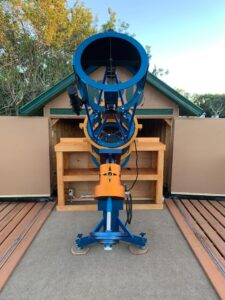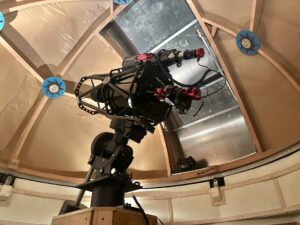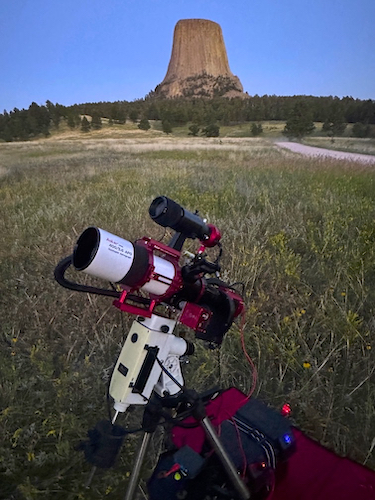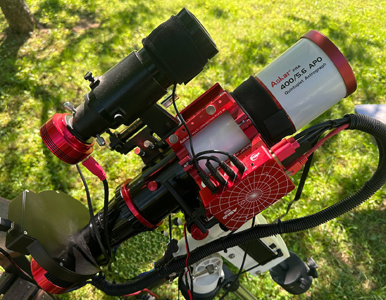Beautiful Digital Images of the Cosmos
Here is a slideshow of astronomical digital images recently captured at KPO, and historical images. The observatory contains many types of optical equipment, cameras, and computer systems to allow us to capture our beautiful digital images of the night sky.
Details and larger versions of all these astrophotos are viewable on our Astrophotography Blog.
Imaging Equipment and Telescopes at the Observatory
18” Newtonian Reflector
The largest instrument at the observatory is the KPO 18″ Reflector, a standard Newtonian reflecting telescope with an original Coulter 18″ F/4.5 parabolic mirror.
The Sky Sentinel control and imaging software drives the telescope to locate deep sky object targets. The telescope, robotic mount, control electronics, and software were all designed and made by David Hearn, and is a one-of-a-kind custom system.
This 20-year-old telescope was moved out to the new 225 sq ft observing deck, and is protected from the elements by a “roll-back” observatory building.
Going forward the scope will be used for visual observing only, for our private observing sessions.
12” Ritchey Chretien Astrograph
In 2023 we procured and installed a new Orion 12″ Richey-Chretien (RC) astrograph (imaging telescope), mounted on an iOptron CEM-120 robotic mount.
This new system provides pristine imaging at over 2400mm, which gives high magnification views of smaller galaxies and planetary nebulae.
Wide Field Astrographic Camera
Since July 2021, most of the recent wide field astrophotos have been captured with the portable astrophotography rig otherwise known as the Wide Field Astrographic Camera (WFAC).
The main optic is an Askar 400mm Quintuplet astrograph, imaging at f/5.6. The primary camera is a ZWO ASI1600MM Pro, with an imaging array of 4656 x 3520 (16.4 megapixels).
Guiding is achieved through an Orion 50mm guide scope, fitted with a ZWO ASI120MM-S Super Speed Monochrome CMOS Camera.
The imaging process is automated by the ZWO ASIAIR Pro WiFi Camera Controller.
All of this gear rides atop the iOptron SmartEQ robotic equatorial mount.
























